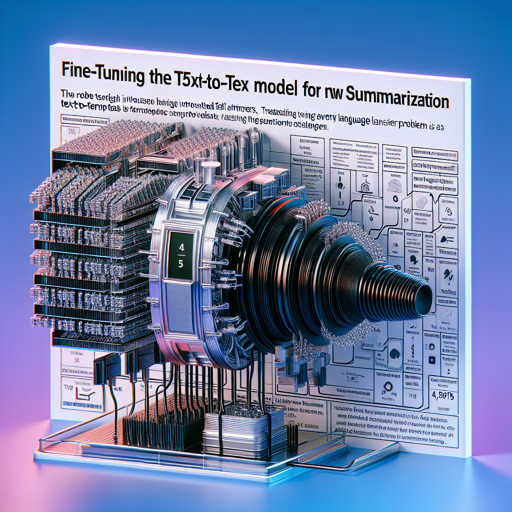In the realm of Natural Language Processing (NLP), summarization is a crucial task that enables efficient information dissemination. The T5 (Text-to-Text Transfer Transformer) model has emerged as a robust tool for this purpose. This article will guide you through the process of fine-tuning the T5 model on the News Summary dataset, sharing insights along the way.
Understanding T5
The T5 model was introduced in the paper Exploring the Limits of Transfer Learning with a Unified Text-to-Text Transformer by Colin Raffel and others. T5 treats every language problem as a text-to-text task, making it adaptable to various NLP challenges, including summarization.
Summary of the Dataset
The News Summary dataset comprises 4,515 examples, including author names, headlines, URLs of articles, short text, and complete articles. It predominantly features news articles scraped from reputable sources like the Hindu and The Guardian, covering a time range from February to August 2017.
Fine-tuning the Model
The following Python code demonstrates how to utilize the T5 model for summarization:
from transformers import AutoModelWithLMHead, AutoTokenizer
tokenizer = AutoTokenizer.from_pretrained("mrm8488/t5-base-finetuned-summarize-news")
model = AutoModelWithLMHead.from_pretrained("mrm8488/t5-base-finetuned-summarize-news")
def summarize(text, max_length=150):
input_ids = tokenizer.encode(text, return_tensors="pt", add_special_tokens=True)
generated_ids = model.generate(
input_ids=input_ids,
num_beams=2,
max_length=max_length,
repetition_penalty=2.5,
length_penalty=1.0,
early_stopping=True
)
preds = [tokenizer.decode(g, skip_special_tokens=True, clean_up_tokenization_spaces=True) for g in generated_ids]
return preds[0]To illustrate how this code functions, let’s employ an analogy. Imagine the T5 model as a renowned chef in a kitchen filled with various ingredients (data). When you provide a recipe (article), the chef expertly combines the ingredients (key phrases) to concoct a delicious dish (summary). The chef’s skill lies in understanding the essence of the recipe and presenting it in a simplified form while retaining the flavor of the original dish.
Model in Action
Here’s how you can summarize an article using the `summarize` function:
article_text = "After the sound and the fury, weeks of demonstrations and anguished calls for racial justice..."
summary = summarize(article_text, 80)
print(summary)For instance, feeding in the aforementioned text about George Floyd’s funeral yields insights while truncating unnecessary details.
Troubleshooting Tips
While working with the T5 model and news summarization, you may encounter some challenges. Here are a few troubleshooting ideas:
- Memory Errors: If you run into memory issues, consider reducing the batch size or checking your runtime environment for optimizations.
- Inadequate Summaries: If your model isn’t generating satisfactory summaries, try adjusting the `max_length`, `repetition_penalty`, or `length_penalty` parameters.
- Library Not Found: Ensure you have correctly installed the transformers library using
pip install transformers.
For more insights, updates, or to collaborate on AI development projects, stay connected with fxis.ai.
Conclusion
Fine-tuning the T5 model for news summarization empowers you to extract essential information efficiently, allowing readers to consume content succinctly. As you delve into NLP, consider how such advancements bolster effective communication. At fxis.ai, we believe that such advancements are crucial for the future of AI, as they enable more comprehensive and effective solutions. Our team is continually exploring new methodologies to push the envelope in artificial intelligence, ensuring that our clients benefit from the latest technological innovations.

